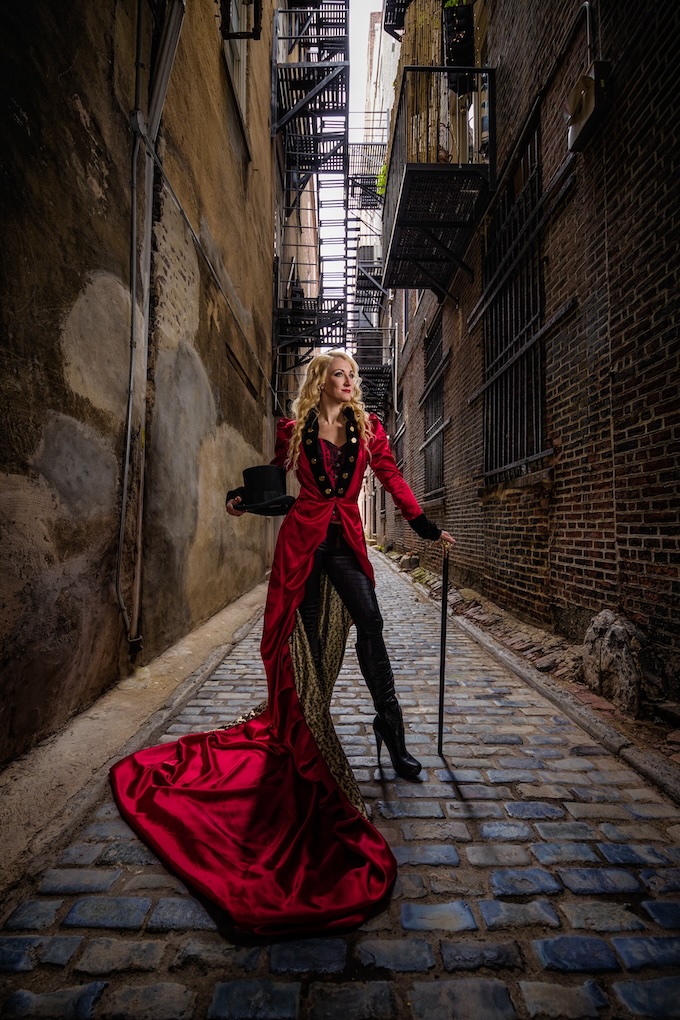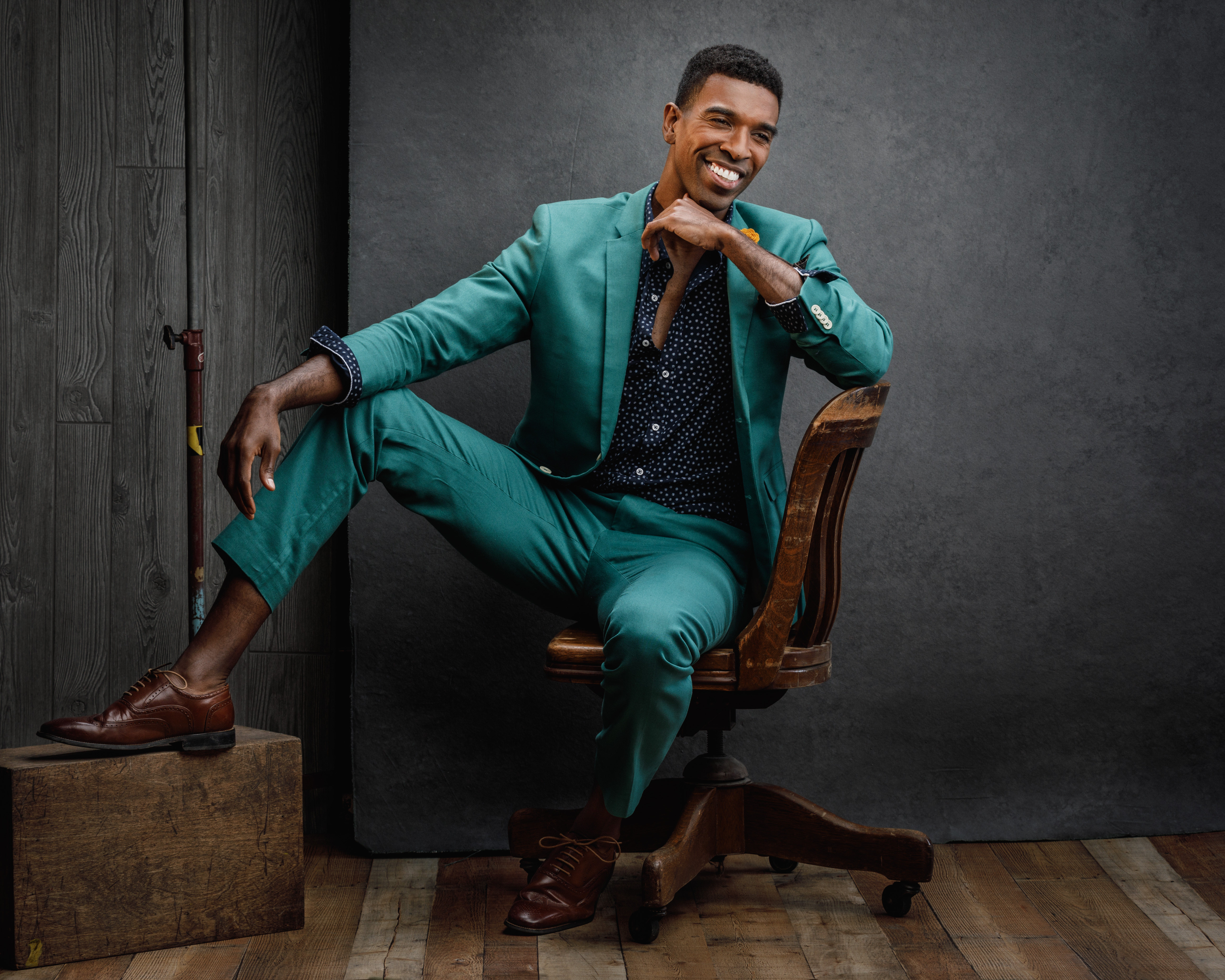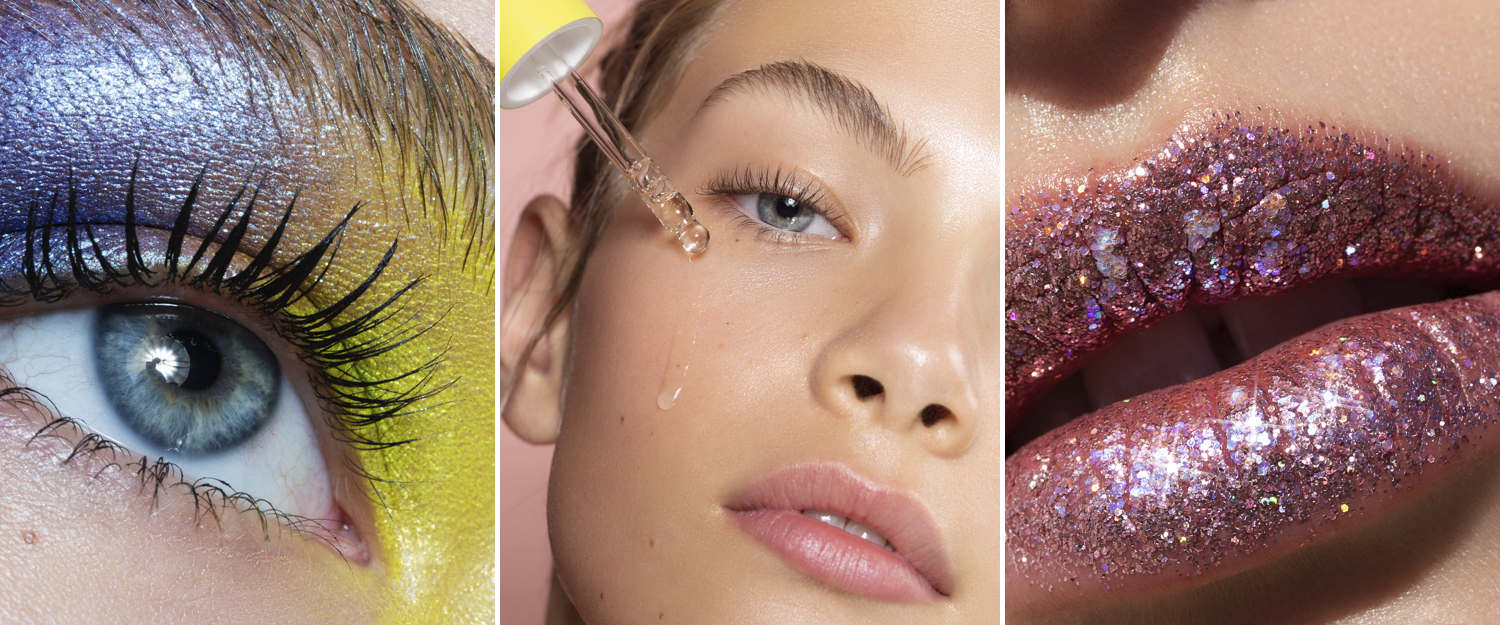How to Shoot a Humorous Portrait: Chris Buck is Quirky in a Good Way
March 12, 2014
It only takes a few seconds to realize that Chris Buck is not going to be a typical interview subject. “Can we skip this part, and you can find this information from other stories published online?” he asks when I opened up with a question about his background. He didn’t want to waste time giving me his biography; he wanted to talk about his work taking celebrity portraits of the likes of Johnny Depp, President Barack Obama, Sarah Silverman and Cindy Sherman. To call him a celebrity portraitist wouldn’t do him justice, though—he’s an insightful observer into the human condition and moreover, a gifted storyteller.
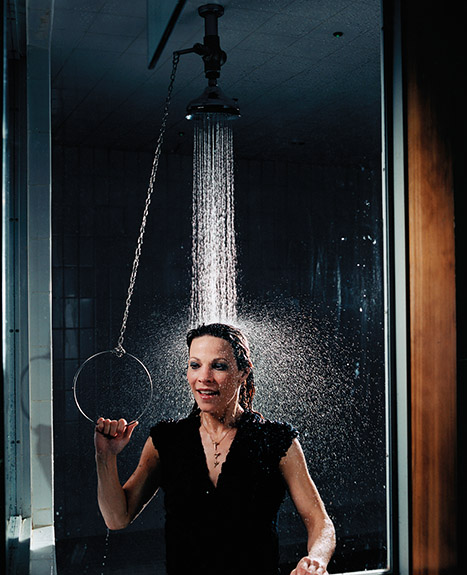
Above: Actress Lili Taylor. All images © Chris Buck
That’s not to say that Buck’s background isn’t interesting. Born and raised in Toronto, where he studied at Ryerson Polytechnical Institute, his career in photography stemmed from an interest in music. As the photo editor of his college’s music paper, every time a well-know act came to town—R.E.M., They Might Be Giants, Sonic Youth, to name a few—he would approach the concert promoter and ask to take a portrait of the band. “Apparently [they] appreciated my enthusiasm,” he says about the musicians who usually agreed to the shots.
By the time he decided to move to New York after graduating in the late 1980s, Buck already had an impressive portfolio, which included a portrait of Keanu Reeves, who had come to Toronto in 1988 for a film festival. It wasn’t long before he was shooting for publications such as the Village Voice and Guitar World. He credits his success to a few key factors: He knew how to keep his expenses low, and he insisted on working as a photographer rather than as an assistant at a studio.
It took five years for Buck to make a decent living, and the turning point came when he began receiving regular commissions from publications like Fortune, Entertainment Weekly and DETAILS, along with getting picked up by the agent Julian Richards. “I also was ready to make some practical compromises, like shooting in color and lighting with strobes,” he says. Making compromises is, of course, a key factor in the early success of any creative career, not just Buck’s.
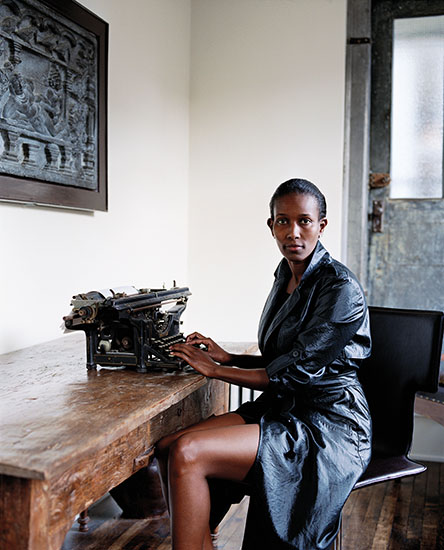
Above: Ayaan Hirsi Ali, a feminist and atheist activist and writer, photographed for
The Guardian Weekend magazine.
The rest, as they say, is history. Buck has shot not only actors and musicians, but also powerful political players such as both Bush presidents and the late Senator George McGovern, the Democratic presidential candidate in 1972. The latter was for a 1996 Newsweek story. “[My assistant and I] first met him as he walked off the beach in a skimpy, patterned bathing suit,” Buck recalls. “He shook our hands and said hello, and we went inside and he showered and shaved and got ready for the shoot, dressed in clothing appropriate for the photo session. When he was off getting ready, I turned to my assistant and said, ‘Oh my God, he looks so awesome. We’ve got to shoot him in the trunks.’ ” The resulting image was used only in Buck’s portfolio and depicts McGovern seemingly shaking his hips in his tiny bathing suit like he’s at a disco dance party.
Buck quickly learned that the best way to get a surprising portrait is to use the time you have with your subject wisely by preparing extensively beforehand. In 2001, he had an assignment to shoot Billy Bob Thornton for (the now-defunct) Premiere magazine. Before the shoot, Buck spent time reading articles and profiles of the actor so that he knew, for example, that Thornton had primarily eaten potatoes when he first moved to Hollywood because he didn’t have any money. On the set, Buck proposed a list of ideas to Thornton, and though the actor declined being photographed with a bowl of potatoes, he did agree to turn his back to the camera and pee on the backdrop. “My instinct was that Billy Bob wouldn’t be offended if I asked him to do that,” Buck says with a laugh.
Buck doesn’t get his subjects to do things by making them feel comfortable—in fact, the opposite is true. “I want my subjects to feel a little uncomfortable and intimidated so that they do what I want,” says Buck, who also notes that he speaks in a quiet voice and doesn’t play music on set.
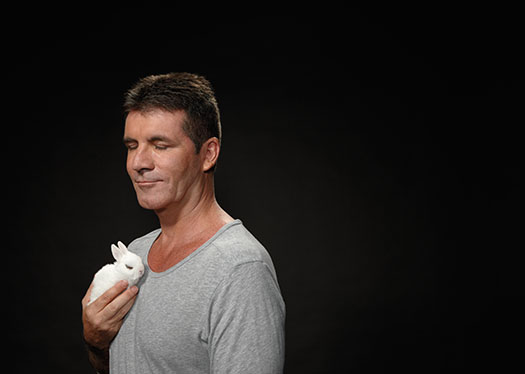
Above: Simon Cowell, a TV personality and esoteric animal rights advocate
cradles a small bunny for Buck’s GQ shoot.
Buck often finds that his best shots are taken with subjects who surprise him. When he was doing a shoot with Simon Cowell for a 2011 story in GQ, he read a lot about the television personality’s scandals—but what most interested him was a one-line news item about Cowell hosting a charity event for the humane treatment of animals. “I brought a bunch of cute animals to the set, and he loved it,” Buck says. The best-known shot from the session is one of the acerbic Cowell cradling an itsy bitsy white bunny rabbit (above).
Buck’s photographs can often be belly-deep funny, such as the Entertainment Weekly shot of food writer Bill Buford holding a fat pig while rustling through a refrigerator, or an image of Ted Cruz for GQ in which the slick politician poses with a bobble head of the former Supreme Court Justice William Rehnquist on his shoulder (both below). “I set out to get pictures that are weird and badass,” he says. “The humor just kind of comes through.”
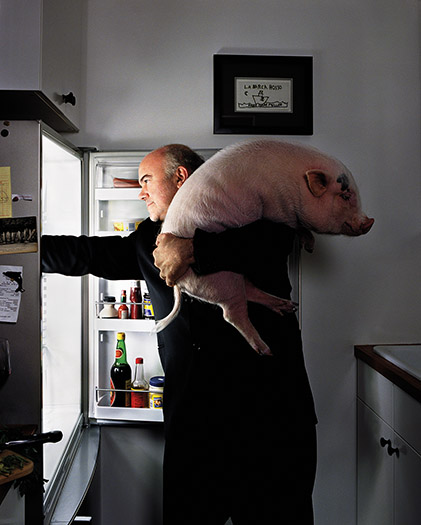
Above: Food writer Bill Buford holds a pig for his cheeky Entertainment Weekly shoot.
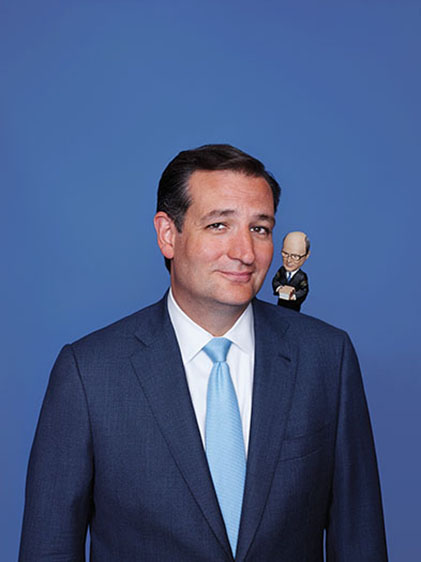
Above: Texas senator Ted Cruz, a former law clerk to William Rehnquist,
stands with a bobble head of the former Supreme Court Justice on his shoulder
“Presence,” a series published in a book released by Kehrer Verlag in 2012, was an example of what he describes as “pure distilled Chris Buck—it’s celebrities, it’s funny, and it’s absurd.” Depicting exactly the opposite of what you usually get in a celebrity portrait—in which subjects such as Chuck Close, David Lynch and Snoop Dogg are hiding, yet present somewhere in the frame—many of the images were taken on set for other assignments. “I’d ask if the subject had 30 seconds to pose for a personal series,” Buck says. The genius in Buck’s plan revealed itself when the celebrities hardly ever refused their omniscient participation for fear of seeming narcissistic. “I’d promise them that there was no way they could look bad,” Buck jokes.
His taste, he admits, leans toward dark humor, the kind that makes light of his sense that “life is so tragic and hard, and you don’t get what you want most of the time.” His cultural influences include Alfred Hitchcock films, the music of Leonard Cohen, and contemporary pop phenomena like Top Chef and the band Tegan and Sara.
Beyond the desire to capture an absurd shot, Buck truly does care about how his subjects are portrayed—especially the women he photographs. As someone “brought up in an era of women’s lib,” Buck was initially afraid of making his female subjects look “too beautiful,” focusing instead on their personalities, often to their dismay. Lately, however, he’s found that the best portraits of women encompass not only their character, but also their grace and their charm. Kim Cattrall, whom he photographed recently for an undisclosed project, was an example of a woman who wanted both beauty and brains in her portrait, and as a result, she was an exciting person to work with, he says.
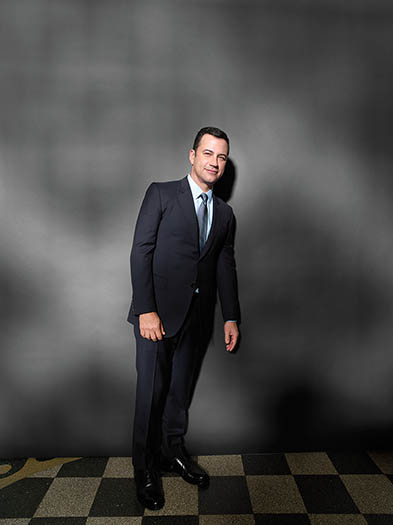
Above: Buck drew inspiration from Frank Sinatra’s albums
for a portrait of the host of Jimmy Kimmel Live!
Buck seems excited to work with every subject, a fact made evident both by talking to him and reading his blog, on which he shares personal anecdotes. On a recent shoot with Jimmy Kimmel (above), for example, he was thrilled that the comedian—of whom Buck has been a fan since The Man Show—shared a joke about Frank Sinatra, whose album covers inspired the shoot. “I was like, ‘I can’t believe Jimmy Kimmel just shared a joke with me, this is so awesome!’ ” he says. One gets the sense that Buck feels this way often; he gets satisfaction out of drawing the unexpected from a public figure who is often so saturated with media attention that they are rendered one-dimensional. In Buck’s portraits, these people are not Hollywood products—they become human again.
For more of Buck’s archive, follow him on Instagram, @the_chris_buck.

